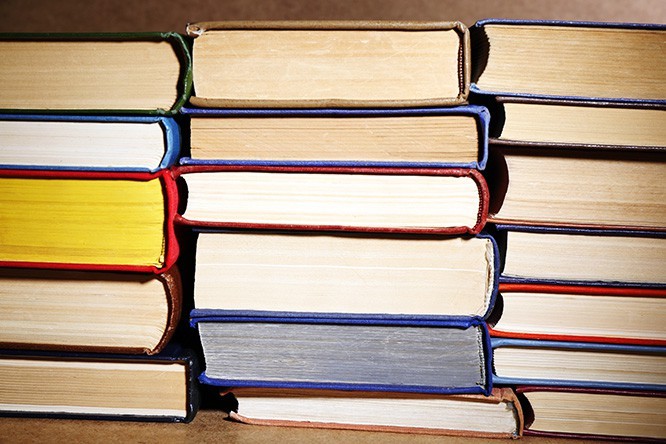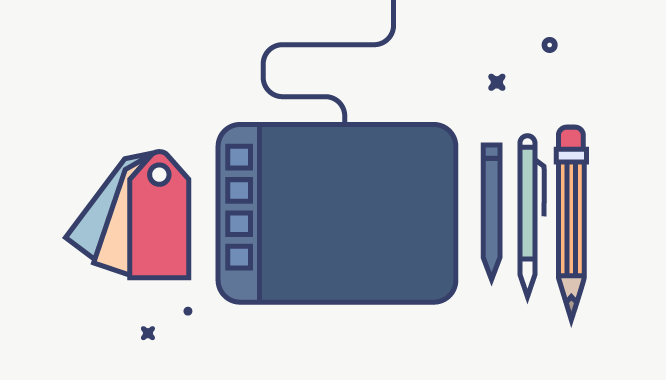16 useful books for creative people
16 useful books for creative people
For any profession, there are tons of books that help you study the subject more deeply. If you are a designer, web designer, illustrator or photographer, then this article is for you!
However, it will be useful to any person working in the field of advertising. In this collection, we’ll tell you about the books that every designer and creative person should read (or at least flip through).

1. Artemy Lebedev “Manhood”
This book was written by the legendary Artemy Lebedev for over 10 years in the form of notes for designers on the Internet. If you look closely, you will notice the phrase “design guide”. In “Kovodstvo” there are no ready-made recipes for design success. Food for the mind can be found here. And how to use it – at the table with good wine or swallowing chunks from a cardboard plate – is the reader’s business. The book contains a lot of material that is not on the site. Over 500 pages of unique and valuable information are worth purchasing this book.
2. Steve Krug “Web Design: A Book by Steve Krug, or Don’t Make Me Think!”
This book was published in 2005, more than 5 years ago, and by the standards of the Internet, this is a whole era. But despite its age, this book remains the best book on usability and website development at the moment. The author offers a lot of practical advice and solutions to problems. The principles of successful web design in this book are very clear and humorous. A must-read for those who are in any way connected with web design.
3. Jacob Nielsen, Hoa Laranger “Web-design. Ease of Use of Web Sites “
The book covers the principles of creating successful websites that are easy to use and easy to use. The recommendations of the highly qualified authors of the book are based on their rich experience and a lot of research conducted with thousands of users. The book examines in detail the features of user interaction with various elements of web sites. Readers will learn how to best design website menus, search and navigation systems, how to improve their loading speed, how to use Flash and multimedia technologies, how to write texts for the Web, and much more. Real examples of changes in the design of websites of the largest companies prove the validity of the conclusions of the authors and their authority in the world of web design.
4. Quentin Newark “What is Graphic Design?”
Design doesn’t evolve in a vacuum. This book begins with an exploration of the foundations that shape design: economics, ethics, technology, theory, and art history. This part of the book traces the development of design over several centuries, from origins in medieval Germany to modern trends, covering areas such as corporate brand and magazine design, film design and website design.
5. Ian W. White Editing by Design
The classic guide to writing literate, engaging, readable publications, published in seven countries and with three reprints. The book clearly demonstrates how the creative interaction of the editor and the designer can maximize the impact on the reader of words, images and space.
Full of simple and original solutions, this book is a desktop guide for designers improving their skills, authors and editors seeking a lively dialogue with the reader, chief editors who care about maximum reach and impact on the audience, and publishers thinking about the competitiveness of their product.
6. Ian W. White “Collection of Graphic Ideas”
The book, which has already become a classic, devoted to the creation of illustrations for print publications, was written and illustrated by a recognized master in the field of print design and will certainly help anyone who wants to release an interesting, memorable, beautiful print product. Literally on every page, you can find hints on how to graphically express those abstract concepts that constantly baffle editors and illustrators: for example, “product improvement”, “spatial relationship” or such a concept as “decision making.” More than 2,000 images that convey ideas are grouped into key sections: clichés (symbols, ideograms), gestures (body language), time (change, evolution), facts (statistics, relationships) and font (words in graphic expression).
7. Robin Williams “Design for Non-Designers”
Here you will find many examples of good and bad design, as well as four basic rules, following which you will succeed in creating attractive documents. The author provides a basic classification of fonts, popularly explaining their main differences and principles of sharing. The material of the book is provided with test tasks, by completing which you will be able to consolidate the acquired knowledge.
How to arrange the text correctly? How to choose a font to get noticed? You will find the answer to these and many other questions in this book.
8. Roger Parker “How to do it beautifully on paper”
The six editions of this US manual is a software- and hardware-independent course in print design that also addresses some of the issues related to documents for the World Wide Web.
The author, one of the most experienced designers, will share with you his secrets, teach you how to capture the attention of the reader, using the entire arsenal of visual means of a modern computer. You will learn how to create documents, be it a promotional brochure, a newspaper or magazine ad, a job report or a resume for a potential employer.
9. Yana Frank “Diary of a maniac designer”
This is a book about designers and for designers – a frank talk about painful things.
At first it existed in the form of an online diary, which was rewritten and illustrated for publication on paper. Jana Frank shares her thoughts on the profession, offers answers to “eternal questions”: should a designer be able to draw, is there an ideal customer, where to get fresh ideas, what is the difference between plagiarism and working with material.
10. Michael Ewami “Logo. Creation of logos. The most modern developments “
This book is the Bible of modern logo design practice. There are more than 1300 of them, divided into groups and types in accordance with the form, symbolism, called associations, and so on. To emphasize the visual significance of the shape of the logo, they are presented in the book in black and white. The collection includes logos of both small design firms and large international well-known companies.
11. David Ogilvy “Ogilvy on Advertising”
After reading “Ogilvy on Advertising”, even a person who is absolutely far from advertising will have an idea of what, at least approximately, high-quality advertising should be and what it should not be.
The book, as the author himself admits, is for young enthusiasts and venerable professionals who do not believe that they know everything about the advertising business, but are ready to look for new ways and approaches. It improves the perception of information by having examples of both high-quality advertising and ways that were clearly not worth following. The author pays special attention, of course, to all types of advertising texts for print, as well as television advertising (with frame-by-frame parsing of several videos).
12. Victor Papanek “Design for the Real World”
The book of the world famous American designer and educator about the tasks and role of a designer in the modern world, about design ethics, about new principles and methods of design, about design as a universal form of human activity that integrates a variety of knowledge, as well as about a new system of training designers.
13. Donald A. Norman “Industrial Product Design”
In his daily life, a person is faced with a lot of things that have become familiar to him: doors, switches, water taps, computer keyboards, etc. Not all of these products are designed in such a way as to make them easier for the consumer to use. The author of the book “Design of Industrial Products” analyzes this phenomenon in a fascinating way, citing a variety of examples of design miscalculations.
The book will be of interest to both professional designers and psychologists and any thoughtful reader.
14. Johannes Itten “The Art of Color”
Itten’s book “The Art of Color” has absorbed the experience of his research, lectures and practical classes on the problems of color, and has been reprinted several times in German, English, French, Italian, Japanese and other languages. The book gained great popularity and entered the educational programs of many art schools around the world.
The book is addressed to artists, a wide range of specialists in various fields of design, architects and is needed by everyone who, in one way or another, wants to learn to understand and master the harmony of color.
15. Timothy Samara “Design structure. Stylish guide “
“Design structure. Stylish Guide “- the most complete and understandable tutorial, in which you will find basic principles of using color, building pages, shaping space, creating an image, and most importantly, how to put it all together. The book not only accumulates the basic design rules, but also suggests how to break them without jeopardizing the message being conveyed and not confusing the audience.
16. Betty Edwards “Discover the Artist in You”
With a total circulation of over 2.5 million and translated into thirteen languages, Discover the Artist in You is the world’s most popular drawing textbook. Whether you think you lack the ability to draw and cannot master the art, or love to draw but cannot rise above a child’s level, this book will explain how to develop the skills that you lack. Even if you paint professionally, it will help you gain more confidence in your abilities and deepen your artistic perception skills. For a wide range of readers.
Source: Be Smart
Cover photo and article: ShutterStock
…

